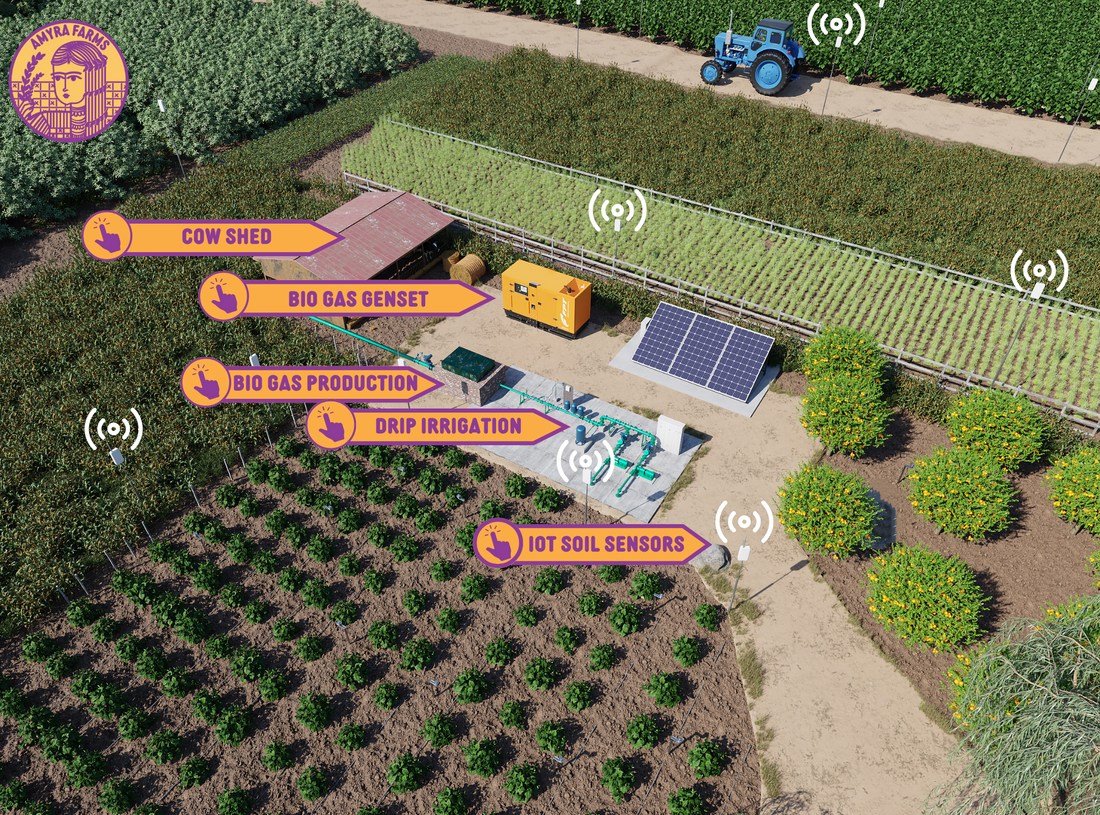Creating a self-sustainable organic modern farm is an exciting endeavour that combines the principles of sustainable agriculture with modern techniques. In this blog post, we will explore the key steps and considerations involved in establishing and maintaining a farm that harmoniously integrates organic practices, self-sufficiency, and innovation. Whether you're a beginner looking to start your own farm or an experienced farmer seeking to transition to sustainable methods, this guide will provide valuable insights and practical tips to help you create a thriving, self-sustainable organic modern farm.
- Understanding Sustainable Agriculture:
- Exploring the core principles of sustainable agriculture and their benefits.
- Importance of organic farming practices and their impact on soil health, biodiversity, and ecosystem preservation.
- Introduction to regenerative farming techniques and their role in improving soil fertility and resilience.

- Planning and Designing Your Farm:
- Conducting a comprehensive analysis of your land, including soil testing and mapping.
- Designing an efficient layout that maximizes space, minimizes waste, and optimizes resource usage.
- Incorporating permaculture principles to create self-sustaining systems and reduce the reliance on external inputs.

- Building a Resilient Infrastructure:
- Establishing sustainable water management systems, including rainwater harvesting and efficient irrigation methods.
- Implementing renewable energy solutions, such as solar panels and wind turbines, to minimize dependence on non-renewable resources.
- Constructing eco-friendly farm buildings and facilities that prioritize energy efficiency and natural ventilation.

- Organic Crop Production and Diversification:
- Selecting appropriate organic crops and varieties suited for your specific region and climate.
- Implementing crop rotation, cover cropping, and companion planting techniques to enhance soil fertility and reduce pests.
- Exploring sustainable pest and weed management strategies, such as biological control and natural remedies.

- Livestock Integration and Animal Husbandry:
- Integrating livestock into your farm ecosystem for natural fertilizer production and soil regeneration.
- Adopting ethical and sustainable animal husbandry practices, including rotational grazing and providing natural habitats.
- Exploring the potential of raising poultry, bees, or small ruminants to further diversify farm outputs.

- Implementing Modern Technologies:
- Harnessing the power of precision farming technologies, such as IoT sensors and drones, for efficient resource management and data-driven decision-making.
- Exploring hydroponics, aquaponics, or vertical farming techniques to maximize production in limited spaces.
- Embracing farm management software and digital tools to streamline operations, track resources, and optimize yields.
- Marketing and Selling Your Organic Products:
- Developing a strong brand identity and communicating your commitment to organic and sustainable practices.
- Identifying target markets and establishing direct-to-consumer sales channels, such as farmers' markets or online platforms.
- Building relationships with local communities and restaurants that value organic, locally-sourced products.
Conclusion: Creating a self-sustainable organic modern farm requires careful planning, dedication, and a holistic approach to agriculture. By integrating sustainable practices, utilizing modern technologies, and prioritizing organic methods, you can build a farm that thrives while preserving the environment and supporting the local community. Embrace the journey of sustainable farming, and let your farm be a shining example of a self-sustainable, organic oasis in the modern agricultural landscape.

